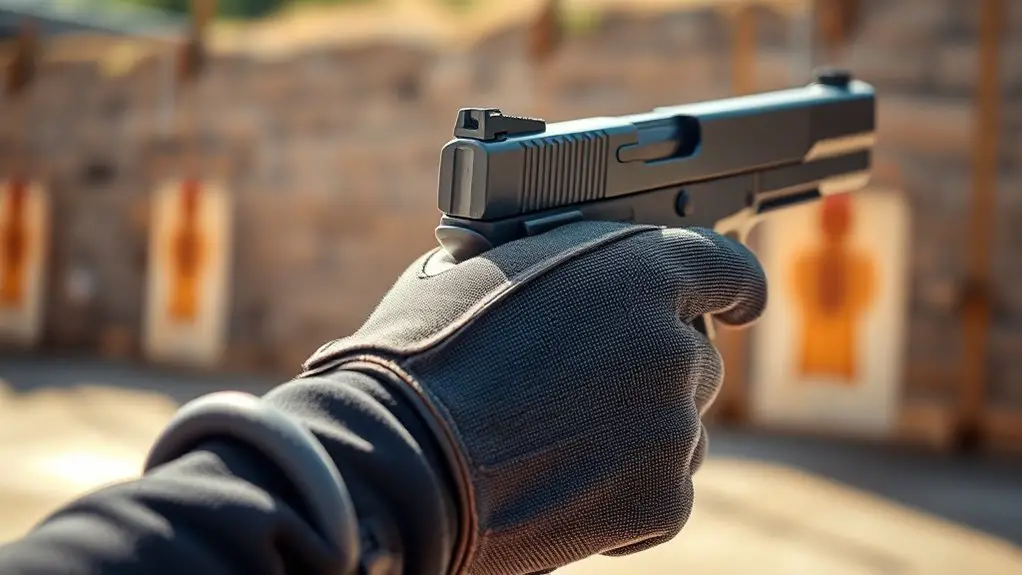To train for explosive first-step speed, focus on key components like reaction time, muscle activation, and strength. Start with drills like A-Skip and falling starts to improve your acceleration technique. Incorporating plyometrics and strength exercises, such as squats, will enhance your power. Don't forget agility training with rope and cone drills to boost coordination. These training methods create a solid foundation for improved speed. Keep exploring to discover even more effective techniques and drills.
Understanding Explosive First-Step Speed
When you think about explosive first-step speed, it's crucial to understand how it can impact your performance in sports and daily activities. This type of speed isn't just about running fast; it involves mastering your reaction time and acceleration mechanics. A quick reaction time allows you to respond to situations effectively, whether it's sprinting off the starting line or dodging an opponent.
Acceleration mechanics focus on how your body moves in those critical first moments. By optimizing your stance, posture, and leg drive, you can reveal your potential. It's all about feeling free in your movements, allowing you to burst into action without hesitation. Incorporating plyometric exercises into your training routine can significantly enhance your explosive power and acceleration.
When you harness explosive first-step speed, you'll not only enhance your athletic performance but also gain confidence in everyday scenarios. So, take the time to understand these elements; they're the keys to unlocking your true speed.
Key Components of Speed Training
Success in speed training hinges on several key components that work together to enhance your overall performance. To truly reveal your potential, focus on these four essential elements:
- Reaction Time: Quickness starts in your head. Train your brain to respond faster with drills that require sudden movements.
- Muscle Activation: Engaging the right muscles at the right time is vital. Incorporate exercises that promote explosive power and coordination.
- Strength Training: Building foundational strength will provide the power needed for an explosive first step. Don't skip this step! Resistance training is an effective way to develop the strength necessary for powerful sprints.
- Technique: Proper biomechanics can drastically improve your speed. Work on your form to guarantee each stride is efficient and powerful.
Effective Drills for Quick Acceleration
To boost your acceleration, incorporating specific drills into your training routine is essential. These drills not only enhance your sprint mechanics but also refine your acceleration techniques. Here are a few effective drills you can start with:
| Drill Name | Purpose |
|---|---|
| A-Skip | Improves knee lift and rhythm |
| Falling Starts | Enhances explosive take-off |
| Acceleration Sprints | Develops speed over short distances |
Try integrating these drills into your workouts, focusing on your form and explosiveness. The A-Skip emphasizes proper leg movement, while Falling Starts teach you how to utilize your body's natural gravity for a quick burst. Acceleration Sprints help you practice reaching peak speed rapidly. Additionally, incorporating strength training into your routine can enhance muscle power for directional changes. Remember, consistency is key, and the more you practice these drills, the more freedom you'll feel in your stride. Embrace the journey to becoming a faster, more explosive you!
Strength and Conditioning for Speed
While many athletes focus solely on sprinting drills, strength and conditioning play an essential role in enhancing speed. Incorporating effective strength training and conditioning techniques can provide the boost you need for explosive first-step speed. Here are four key areas to target:
Strength training and conditioning are crucial for improving speed; focus on core, leg strength, plyometrics, and speed endurance.
- Core Strength: A strong core stabilizes your body, improving power transfer during sprints.
- Leg Strength: Focus on squats and lunges to build the muscles vital for quick acceleration.
- Plyometrics: Incorporate box jumps and bounding exercises to develop explosive power.
- Speed Endurance: Use interval training to enhance your ability to maintain speed over time. Additionally, focusing on functional strength through compound movements can significantly improve your overall explosive power.
Incorporating Agility Into Your Training
Strength and conditioning are foundational for speed, but agility is equally important when it comes to enhancing your overall athletic performance. By incorporating agility into your training, you'll give yourself the freedom to move quickly and change direction efficiently. Start with agility ladders; they're fantastic for improving footwork and coordination. You can mix in various patterns to keep things exciting and challenging. Additionally, agility ladder drills can boost cardiovascular fitness and prepare you for more intense training sessions. Next, add cone drills to your routine. Set up cones in different formations and practice weaving, sprinting, and cutting at speed. This'll not only boost your agility but also condition your body to respond swiftly in game-like situations.
Frequently Asked Questions
What Is the Ideal Warm-Up for Speed Training?
Imagine your body as a finely-tuned race car, ready to roar. To get there, your warm-up's gotta be spot on. Start with dynamic stretches that awaken your muscles, like a gentle breeze ruffling leaves. Then, immerse yourself in mobility drills, releasing the freedom of movement in your joints. This combination not only preps you for speed but also guarantees you're ready to sprint into action, feeling light and free as a bird.
How Often Should I Train for Explosive Speed?
When it comes to training for explosive speed, you should aim for a frequency that balances intensity and recovery. Generally, two to three sessions per week is a solid guideline. This allows your body to adapt without overtraining. Mix in varied training schedules to keep things interesting, and don't forget to listen to your body. Enjoy the freedom to adjust based on how you feel and your overall fitness goals!
Can Nutrition Affect My First-Step Speed?
Can what you eat really impact your first-step speed? Absolutely! Nutrition plays an essential role in your performance. By focusing on nutrient timing—fueling your body before and after workouts—you'll optimize energy levels. Don't forget hydration strategies; staying well-hydrated keeps your muscles functioning at their best. When you're properly nourished and hydrated, you'll feel more agile and powerful, giving you that freedom to explode off the line whenever you need to.
Are There Specific Shoes for Speed Training?
When it comes to speed training, having the right shoes can make a difference. You'll want shoes that have lightweight materials and good traction for various training surfaces. Look for features like responsive cushioning and flexibility, as they'll help you push off quickly. A shoe that fits well and supports your foot can give you the freedom to move without restrictions, allowing you to focus on improving your speed effectively.
How Do I Measure My Speed Progress?
To measure your speed progress, you can use various timing methods. Start by timing your sprints over a set distance, like 40 yards, to track improvement. Incorporate sprint drills into your training routine, focusing on technique and explosiveness. Regularly compare your times to see how you're advancing. Remember, it's all about feeling free and fluid in your movements, so enjoy the process while you chase those speed goals!




